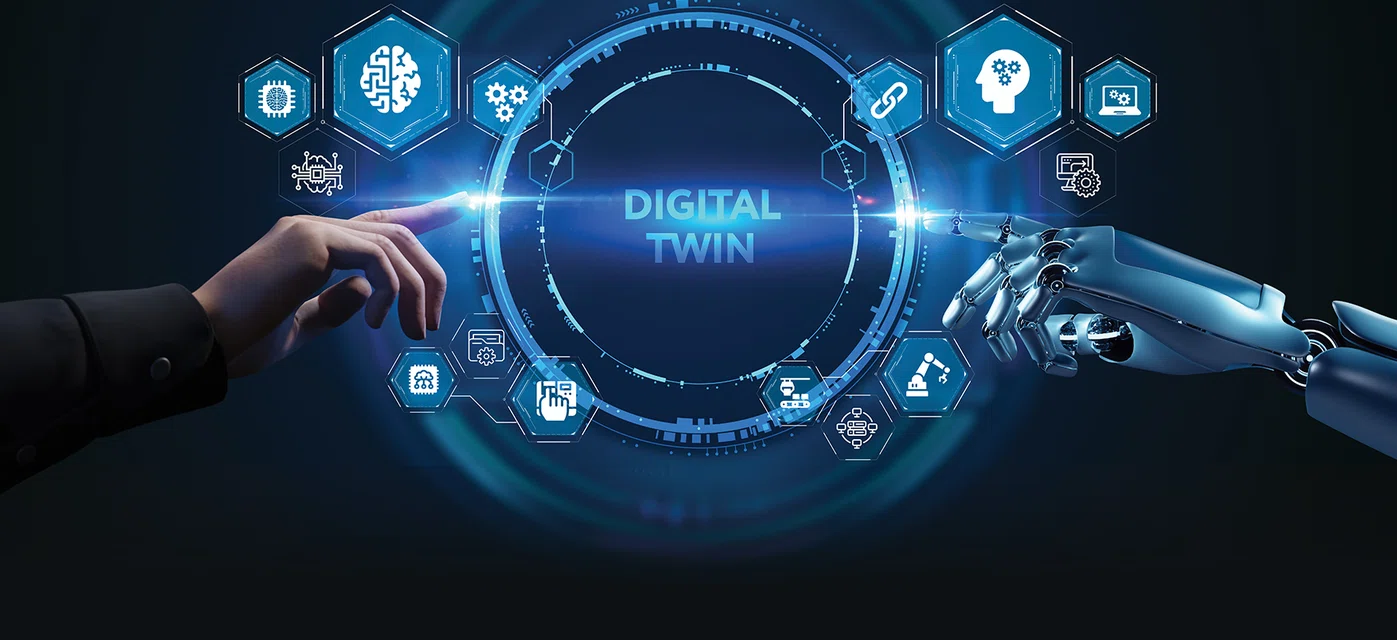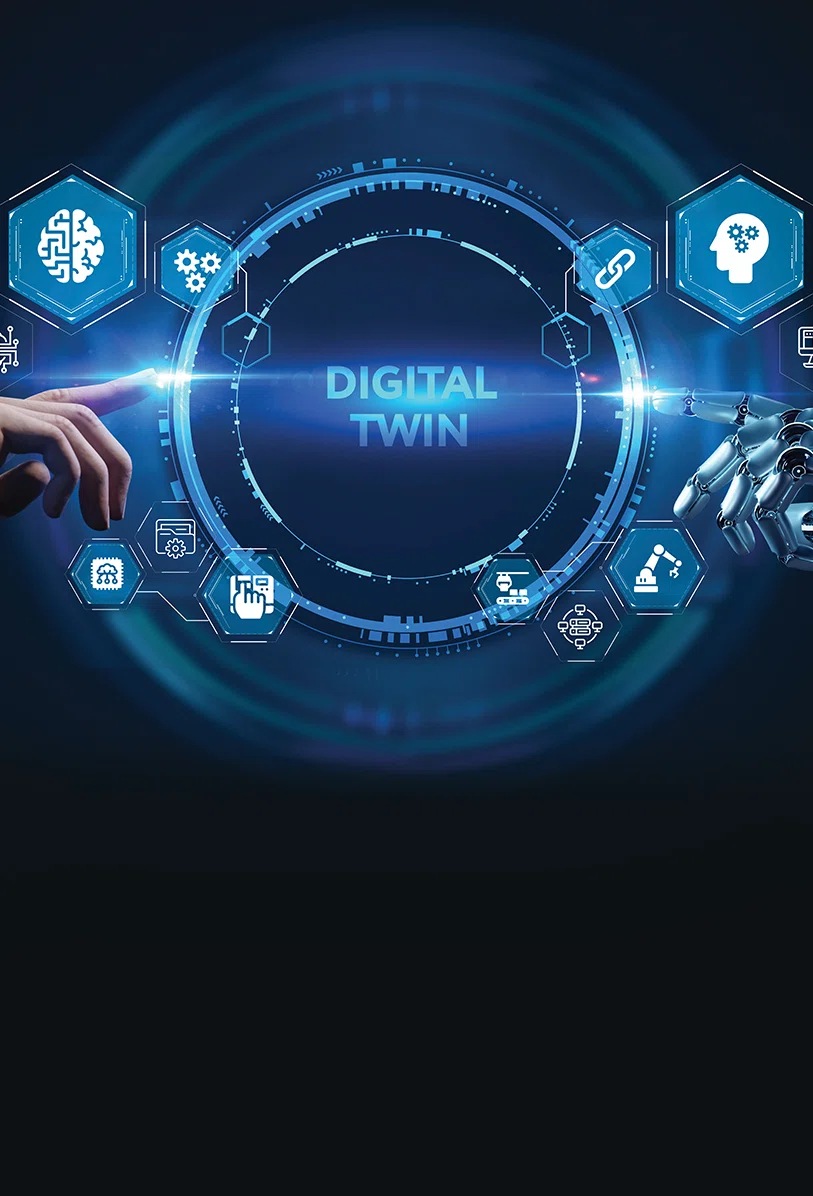Follow us on:
CONTACT US | Download the 2021/2022 issue | ©Atlas Copco AB



result
Search
A MAGAZINE FROM ATLAS COPCO GROUP
Sustainable technologies
Markets
Smart manufacturing
Our culture
Service and Consulting
Energy efficiency
THE RISE OF
DIGITAL TWINS


By producing an exact digital copy of real-world machines Atlas Copco is improving its product design and performance to provide proactive service and reduce the environmental impact.
One of the most intriguing new technologies arising from digitalization and the Internet of Things is the so-called Digital Twin concept, which means that you create a virtual replica of a real-world product.
“The purpose with a digital twin is to serve as a digital counterpart of a physical product to give deeper, evidence-based insights, such as simulations, monitoring or maintenance needs,” explains Gill Dhooghe, whose R&D team in Portable Air is one of many parts of the Atlas Copco Group to have embraced the digital twin concept.
But a digital twin is not merely a product visualization. It’s a broad concept, where the twin collects all possible data coming from a product, including marketing, design, 3D, test, production and service data.
“All our products worldwide are sending back millions of data points every second,” says Gill. “We combine that data with our internal data on marketing, design and so on, and structure it into data models. It’s these models and the visual aspect that together make up a digital twin.”
There are many potential applications for this technology, including predictive and prescriptive maintenance, product improvement, and simulating products in advance of even the first prototype. Here are some examples.Atlas Copco recently launched B-Air, a battery-driven compressor. The challenge in developing it was that batteries are very expensive, and to handle full-load applications for an eight-hour shift you’d need an enormous machine to squeeze in a lot of batteries.
Product development:
“By gathering data from our machines already in the field we understood how many hours per day the customer was actually using our compressors and in which circumstances. Based on that information we could select the right battery size and technology to create the right product for our customers,” says Gill.Digital twin technology has also been used to analyze a diesel compressor range, examining how the machines are used in load, unload and no-load conditions.
Sustainability
“The purpose of a compressor is to deliver air, which it only does in load mode. But some customers kept it idling constantly, which is both costly and unsustainable. By analyzing the user data in detail, we were able to convince customers to enable the machine’s start-stop ECO-mode, like in a car. This means a lot less energy is consumed, which translates into a significant CO₂ reduction,” says Gill.Digital twin insights can also improve service and maintenance, not least for machines used in difficult-to-reach areas.
Service efficiency
“When a customer calls, we can save time by checking what has happened in that product through our connectivity solution, and track back the history of the machine usage to analyze the root cause,” says Gill.
In one particular case, the data showed that the operator was changing the pressure during operation. The operator didn’t know that when doing so, you also need to manually switch your machine from single-stage to two-stage compression, to prevent shutdowns.
“We could then quickly explain this over the phone and provide an immediate solution for the customer, who was very happy. We also inserted an additional data point in our connectivity data so in the future we can proactively alert if we see this happen. We also put that extra detail into the training for customers who use that machine.”
A new eco system
Gill is excited about what the digital twin technology can do for R&D, business opportunities and customers’ knowledge.
“It becomes really interesting when the digital model enables us to do more than what’s possible in the real world. We can compare a wide range of sibling products operating worldwide, something we can’t do with real machines,” says Gill.
“Our customers can access pre-defined parts of our digital twins and get content that can help them use our products in an even smarter and more efficient way.”
“In the future, compressors interacting with all the other machines, with the people, the processes and the factories surrounding them, will boost the productivity and efficiency of the entire ecosystem. Digital twins will play a critical role in accelerating the transition towards a more efficient and sustainable future.”

The purpose with a digital twin is to serve as a digital counterpart of a physical product to give deeper, evidence-based insights, such as simulations, monitoring or maintenance needs.”

Gill Dhooghe
Vice President, R&D,
Portable Air Division
Suggested Articles




